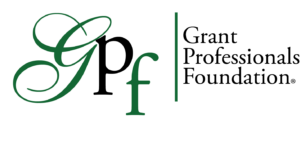Keeping in Touch with Your Foundation Donors
 By Teri S. Blandon, GPC, CFRE; Vice President for External Relations, PAI
By Teri S. Blandon, GPC, CFRE; Vice President for External Relations, PAI
The 2016 election caused massive disruptions to many people, personally and professionally. As I work for a women’s reproductive rights advocacy organization, the election results caused us to pivot quickly. Immediately, we had to pull back our annual appeal letter (which was at the printer) and completely rewrite it to reflect the new reality. On an organizational level, we have had to significantly revise our 2017 program plan, which will impact our upcoming foundation proposals and reports.
The election may have caused similar disruptions in your nonprofits. While there are a lot of unknowns about what the future brings, there are concrete things you can and should be doing to maintain positive relationships with your institutional donors.
- Talk with the community you serve. The campaigns were extraordinarily acrimonious, and stirred up a lot of negative feelings and uncovered deep schisms in our country at many levels. How has this played out in your community (however you define “community”)? Whether you operate locally, state-wide, nationally or internationally, no one has been left unaffected by the campaigns and election. Your nonprofit is on the frontline — what are you learning about the people you serve that could be useful to your funders?
- Check in with your program colleagues. What worries the program experts about the incoming Congress and Administration? How are your programs and community likely to be affected by policies at the state and national levels? Perhaps there was some good news in your state elections — for example, some jurisdictions increased the minimum wage which will positively impact many of the groups we serve. Make sure you are aware of any discussions going on about how your nonprofit may have to change or adapt your programming in the coming months.
- Talk to your foundation donors. Almost all of our foundations are now talking internally about how their strategy will shift in light of the Trump-Pence administration. While these discussions will likely take some time, you have a golden opportunity to position your organization as a provider of important and useful intelligence. Thinking back to my first bullet point — what do you know about how the community is feeling/reacting? What is happening within your community to address the issues churned up by the election? And pulling in the information referenced in my second bullet point — what is your nonprofit doing about it? In the case of my organization, we were able to pull together an analysis of the probable funding cuts and policy changes that will happen after the inauguration, and distributed it to our top funders. (The best part is that this was the idea of our Programs staff!) We intend to keep them updated as new information becomes available. We received several emails in response expressing how much the program officers appreciated the information. This wasn’t about asking for money (that will come later); it was about making sure our funders had accurate and timely information they can use when discussing their own strategy.
You are not powerless — you have important information about how upcoming policies and funding decisions affect real people. Use it to advocate for the people you serve by sharing it with your donors. It will position your organization as a provider of services and intelligence.

